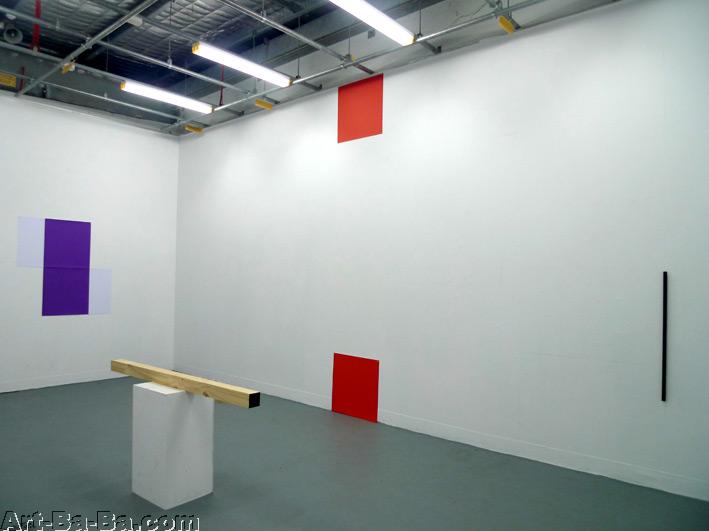DAVID PESTORIUS PROJECTS NEWSLETTER

PAUL BAI
Pestorius Sweeney House
22/9/2012 — 27/10/2012
Pursuit of the immaterial has a long tradition in visual art. Simone Martini's 14th Century Annunciation, for example, made the presence of the Holy Spirit palpable by delineating a distinct negative space between the Virgin Mary and the angel bringing her tidings. 20th Century artists sought to represent the immaterial through abstraction and by forms of reduction. In the 1960s, artists such as Mark Rothko, Barnett Newman and Ad Reinhardt used both these strategies to address a spiritual dimension and Yves Kline painted shiny monochromes whose deep virtual space evoked a metaphysical realm that he termed ‘the void’. Frank Stella’s black paintings and the sculptural installations of Carl Andre, on the other hand, emphasised pure materiality. However, both sets of experiments finally led to conceptual art in which the physical appeared to become redundant.
Adopting many of the tropes of minimalism and conceptual art, Paul Bai contributes to this tradition an insistence that the immaterial is also material. Constantly, his work asserts that concepts depend on a physical infrastructure and that, equally, physicality is dependent on concepts and therefore on ideological circumstances in the real world.
Something like this was arrived at by artists such as Joseph Kosuth and Lawrence Weiner in the late 1960s and ‘70s when they equated concepts with language. But Bai goes a step further. Drawing on the insights of theorists such as Manuel Castells, Bai finds that physical space today is as interdependent with conceptual space as language was for Kosuth and Weiner.
For example, painting green monochromes at each end of length of timber instead of on a flat panel, Bai forces us to traverse the space between the ends in order to perceive the work. The distance is real rather than ‘virtual’; the viewpoint taken by the observer is always relative rather than absolute; yet the work itself constitutes a single concept without which the viewer’s action would be absurd. Simultaneously, the fresh length of timber and its little leaf-green monochromes allude to diminishing natural resources rather than to art per se as would the Greenberg-inspired tradition that Bai appropriates.
Bai’s works remind us that the 21st Century world is one in which place and space are in a state of flux both conceptualised and real, making it difficult to distinguish one from the other.
(Text: George Petelin, September 2012)
For more information about the artist, please visit http://www.paulbai.com OR
Pestorius Sweeney House
39 Eblin Drive, Hamilton 4007
Brisbane
Australia
Wednesday–Saturday, 1 – 5pm
T +61 7 3262 4870
dpg@thehub.com.au www.davidpestorius.com <http://www.davidpestorius.com/>
